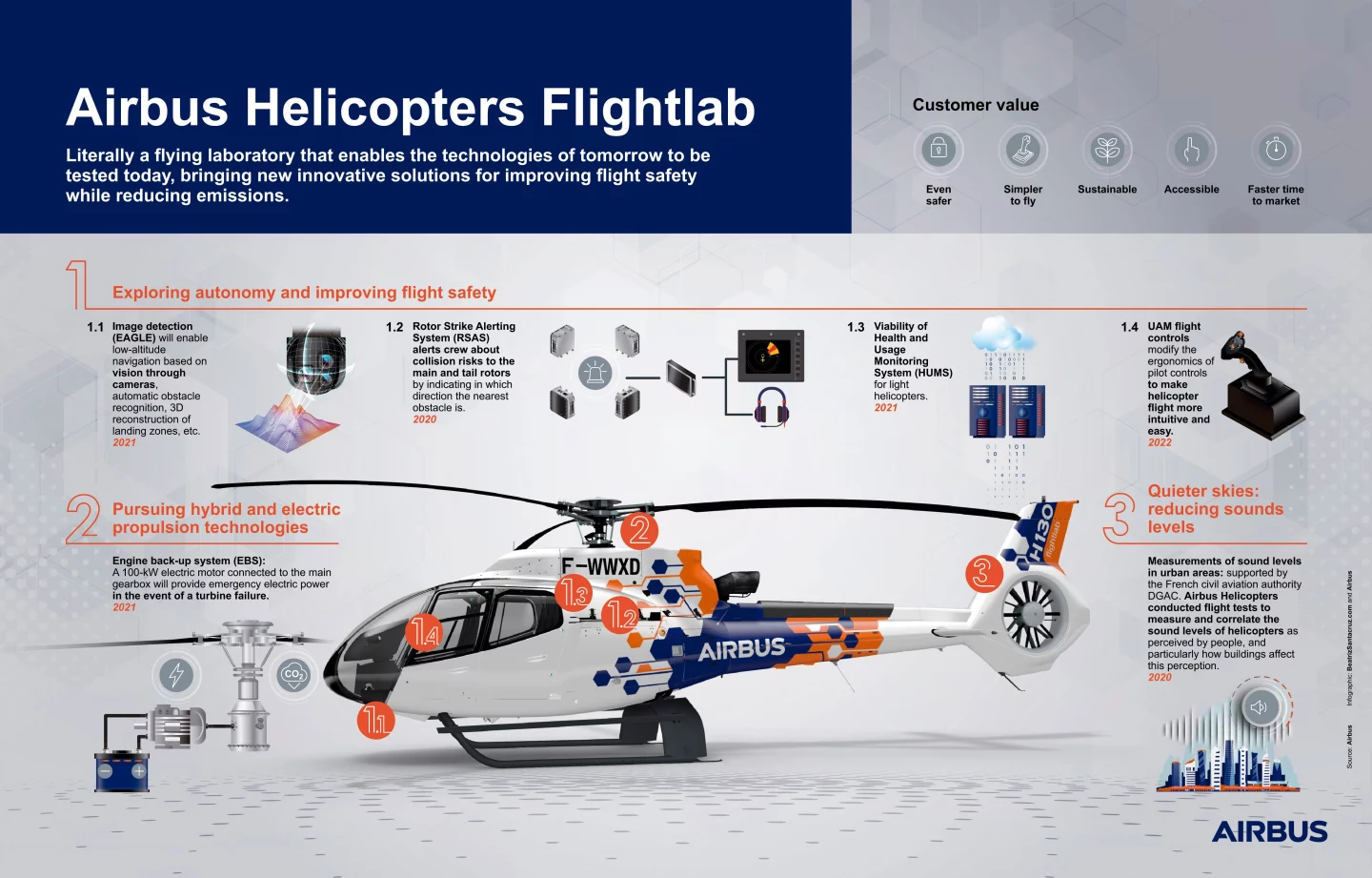Airbus Helicopter's Flightlab flying laboratory based on the H130 copter has taken to the air for the first to perform a series of platform-agnostic in-flight tests of new systems aimed at ushering in next-generation aircraft technologies.
Digital simulations and wind tunnels are all well and good, but there comes a point in aerospace engineering when a new technology has to be installed in an actual aircraft to see if it really does what it's supposed to. For this, Airbus has developed a number of Flightlabs, including the A340 MSN1 for studying laminar flow on larger aircraft, and the 350 Airspace Explorer for testing connected cabin technologies while in flight.
Now the company has added the H130 helicopter Flightlab. Though it's only now starting technology tests, the flying lab has been conducting urban sound tests with the French civil aviation authority since last April to understand how people perceive helicopter noises and how buildings affect these perceptions, which will be important as Urban Air Mobility (UAM) becomes more common.

Now, the Flightlab is looking at a number of new technologies designed to improve flight safety and operability. These include the EAGLE image detection system, which uses computer vision for automatically identifying obstacles and for the 3D reconstruction of landing zones; the Rotor Strike Alerting System (RSAS), which alerts pilots to the danger of rotor collision risks by identifying the direction of the nearest obstacle; the Health and Usage Monitoring System (HUMS), which keeps an electronic eye on the systems of light helicopters; new UAM controls that improve the ergonomics of helicopter interfaces to make them more intuitive; and the Engine Back-up System (EBS), which is a 100-kW propulsion system connected to the main rotor that takes over in the event of an engine failure.
"Investing in the future remains essential, even in times of crisis, especially when those innovations bring added value to our customers by targeting increased safety, reduced pilot workload, and reduced sound levels," says Bruno Even, Airbus Helicopters CEO. "Having a dedicated platform to test these new technologies brings the future of flight a step closer and is a clear reflection of our priorities at Airbus Helicopters."
The video below introduces the H130 Flightlab.
Source: Airbus Helicopters






